Black Fury

Brief Synopsis
Cast & Crew
Michael Curtiz
Paul Muni
Karen Morley
William Gargan
Barton Maclane
John Qualen
Film Details
Technical Specs

Synopsis
Joe Radek, a simple, well-liked, Eastern European immigrant, is in love with Anna Novak. He dreams of quitting his job as a miner, buying a farm, and marrying Anna. Anna likes Joe, but longs for a different life, and runs away with Slim Johnson. Joe falls apart, gets drunk, and during a union meeting joins a dissenter named Steve Croner in a rebellion against the coal company. Joe's good friend Mike Shemanski, the local union leader, unsuccessfully begs Joe to trust the union. Joe is fired and the company brings in a private police force, headed by a thug named McGee. The union is forced to strike, scabs are sent in to work the mine, and Croner, who turns out to be a company agent, leaves town. One night, McGee and his police pick a fight with Mike; Joe comes to his rescue, but it is too late. McGee kills Mike and Joe is seriously wounded. In the hospital, Anna visits Joe and asks his forgiveness. At first he refuses her offer for support, but after a change of heart, he leaves the hospital and, with Anna's help, enters the mine, threatening to dynamite the shaft if the company doesn't negotiate with the union. McGee goes in after Joe, but after a brutal fight, McGee becomes Joe's hostage. Finally, after days of holding his position, the company agrees to Joe's terms. A federal investigation proves that the coal company instigated the strike, and Joe and Anna are redeemed in the eyes of the townspeople.

Director

Michael Curtiz
Cast
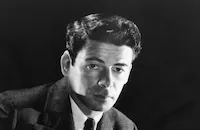
Paul Muni

Karen Morley
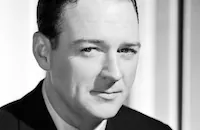
William Gargan
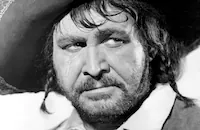
Barton Maclane

John Qualen

J. Carrol Naish

Vince Barnett

Tully Marshall
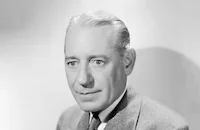
Henry O'neill
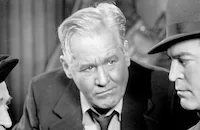
Joe Crehan

Mae Marsh

Sarah Haden
Willard Robertson
Effie Ellsler
Wade Boteler
Egon Brecher
George Pat Collins

Ward Bond

Akim Tamiroff
Purnell Pratt
Eddie Shubert
George Offerman Jr.
John M. Bleifer
Harry Hastings
Harry Tyler
Mitchell Ingraham
Herbert Heywood
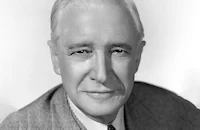
Samuel S. Hinds
Katherine Clare Ward
Pedro Regas
Patrick Moriarity
Harry Curdins
Nick Copeland
Mary Russell

Claire Mcdowell
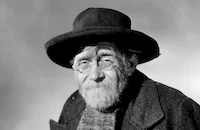
Christian Rub
Ferike Boros
Dick French
William H. Turner

Addison Richards
Don Brodie
June Eberling
Edith Fellows
Bobby Nelson
Wally Albright Jr.
Dorothy Gray
Charles C. Wilson
Mickey Rentschler
Crew
Charles Alexander
Fred Applegate
Harry Barnhouse
Hugh Blair
Dan Brown
Mary Dery
John Ellis
Emmet Emmerson
Carl Erickson
Abem Finkel
Leo F. Forbstein
Byron Haskin
Ted Hayes
John Hughes
Robert Lord
Frank Mattison
Frank Mcdonald
Emily Moore
Harry Raven
Thomas Richards
Russ Saunders
Carroll Sax
Jack L. Warner

Photo Collections
Videos
Movie Clip



Trailer
Hosted Intro
Film Details
Technical Specs

Articles
Black Fury
In the film, Muni plays Joe Radek, a coal miner who is engaged to Anna Novak (Karen Morley). When Anna leaves Joe for another man, Joe gets drunk and wanders into a meeting for the miners where an agitator is trying to get the men to reorganize their union. Roused to action, Joe becomes very vocal and by the end of the meeting a group has broken off and formed a new union under his leadership. The next day, however, company officials prevent the men from working. A fight breaks out and a company officer kills Joe's friend, Mike Shemanski (John Qualen). In the fracas, Joe is beaten so badly he has to be hospitalized but despite his injuries, Joe returns to the mine and barricades himself inside with dynamite. Through this desperate act, he hopes he can force the mine owners to recognize the union.
Warner Bros. was careful not to publicize Judge Musmanno's connection to the production during filming since he was NOT very popular in the mining communities after the publication of his story. The studio knew mining companies would not want to cooperate with a film Musmanno was affiliated with and, since another strike was looming on the horizon, the studio wanted to keep things peaceful on the set for director Michael Curtiz and his crew. Eventually, Curtiz and cinematographer Byron Haskin took a crew to Pennsylvania to get footage of actual mines and to examine the miner's living conditions. Once the film was complete however, Warner Bros. played up the connection to Musmanno since they thought the judge's controversial reputation would help bring in audiences.
In addition to the footage from real Pennsylvania mines, Warner Bros. created their own coal mine on the Warner Ranch at Calabasas, California. The mine was complete with tunnels, shafts, elevators, and coal. Filming began on Black Fury on October 18, 1934, just one week after Paul Muni finished Bordertown (1935). Muni originally expected to finish the latter film over the summer, but a series of script revisions kept pushing it back, making the actor overly anxious about the short turnaround time between projects. In addition to the psychological shift he had to make between his role as Ramirez in Bordertown and the character of Radek in Black Fury, Muni also had to change his physical appearance. With the help of make-up artist Perc Westmore, Muni decided Radek should have blonde hair. According to Jerome Lawrence in Actor: The Life & Times of Paul Muni, "Muni approved but felt a wig, no matter how expert, would seem false, so they went to work on his own hair. Muni himself had brewed up walnut stain for the jet-black hair of Ramirez. Westmore found that walnut stain doesn't unstain easily. They bleached and bleached, including his eyebrows and the stubble on his chin. Then Westmore literally turned a cereal bowl over and gave Muni a typical 15-cent Pennsylvania coal-town haircut. When he stared into the mirror, Muni said, "That I guarantee you is a Polack, born and reborn." Then he laughed. "Nobody can say I'm not willing to dye for dear old Warner Brothers!"
While there were rumors that Muni and Curtiz clashed during the making of Black Fury, they basically respected each other though Muni did occasionally try to use his clout as Warner Brothers' most prestigious actor. In one incident, he tried to have co-star Vince Barnett taken off the film because he felt Barnett's performance was inappropriate in the context of the film. According to Barnett in the Michael Druxman biography, Paul Muni: His Life and His Films, "There was nothing personal in his actions, since we had been friends since Scarface. He just felt that, in such a serious film as Black Fury, there shouldn't be any comic relief. Lucky for me, Mike Curtiz disagreed with him and I stayed. There were no hard feelings on Muni's part and I worked with him again on The Woman I Love."
When Black Fury was released, it sparked a wave of controversy. According to Lawrence's biography, "The state boards in Maryland and Illinois banned it outright. There were long debates before it was shown, reluctantly, in Pennsylvania (They objected to the unflattering portrayal of Pittsburgh). The New York board demanded the cutting of the scene of the brutal killing of Mike Shemanski, John Qualen's vivid parallel to the real-life John Barkowski." Since it had only been a few years since Barkowski's death, the events in the film stirred up volatile emotions and not just due to the political and social issues. Some local state censor boards blocked the film's exhibition due to its steamy love scenes between Karen Morley and her two co-stars, Gargan and Muni. Interestingly enough, the Hays office unanimously approved the film. However, when Hays himself later saw it, he "wondered whether he and the Production Code boys had screened the same print. He believed that Black Fury violated Code regulations on criminal behavior." But Production Code administrator Joe Breen held his position calling Black Fury "a fine social document" and "distinguished artistic achievement."
Despite receiving some critical acclaim for handling such a controversial topic with intelligence and compassion, Black Fury did not receive any Academy Award nominations. Some believe the film was simply too political to be acceptable in Hollywood.
Director: Michael Curtiz
Producer: Robert Lord
Screenplay: Abem Finkel, Carl Erickson. Based on the play Bohunkby Harry R. Irving and the story "Jan Volkanik" by Judge M. A. Musmanno.
Cinematography: Byron Haskin
Art Direction: John Hughes
Music: Howard Jackson, Bernhard Kaun
Cast: Paul Muni (Joe Radek), Karen Morley (Anna Novak), William Gargan (Slim), Barton MacLane (McGee), John Qualen (Mike Shemanski), J. Carrol Naish (Steve Croner), Mae Marsh (Mary Novak), Ward Bond (Mac).
BW-95 min.
by Deborah L. Johnson

Black Fury
Quotes
Trivia
Notes
The film's working title was Black Hell. A second unit shot footage in Pennsylvania for the film and a full-scale mine shaft was dug on the Warner Ranch in Calabasas, CA. Scenes were also shot on the stages at the Burbank studio and at the old Warner lot on Sunset Blvd. in Hollywood. According to a news item in Daily Variety, a complaint against the movie was brought by an east coast coal mine operators group. MPPDA President Will H. Hays was asked to stop the production because it dealt with "certain capital-labor relations which the complainants consider against the best public policy at this time." The MPAA/PCA collection at the AMPAS Library contains a letter from J. D. Battle, the executive secretary of the National Coal Association to the Hays office, expressing his concern that the film would prove harmful to the coal industry, and claiming that bad conditions had been eliminated and that the industry currently enjoyed good relations with its workers. Modern sources report New York censorship board demands that the scene depicting the brutal murder of Mike Shemanski be cut, but files in the MPAA/PCA Collection at the AMPAS Library indicate that they passed it without objection.
The scene was based on an actual strike case in which John Barkowski, a coal miner, was murdered by three company policemen. MPPDA files reveal that the entire film was banned in Chicago, Guatamala, Spain, Peru, Venezuela and Trinidad, and several other states and countries demanded cuts in the scenes portraying police brutality, Mike's murder, and the mine explosion. The film was passed without objection in Pennsylvannia, which might have been expected to raise the most objections because of its dependence on the coal industry. Some objections were raised because Joe's criminal activities in setting off explosions in the mine remain unpunished, but Director of Studio Relations for AMPP Joseph Breen addressed this problem in a letter to Hays stating, "Joe is not a criminal. Rather is he an infuriated, stupid fellow gone temporarily mad because of his high emotionalism. ... [W]hile the audience is certain to understand the forces which motivated Joe to commit the criminal act, there is not likely to be any disposition to sympathize with his crime." Breen requested that some of the dialogue refer to the fact "that while the miners May not have ideal working conditions, nevertheless working conditions of the coal industry have vastly improved and are getting better all the time." The studio was also asked to strengthen the fact that Croner is promoting strife as an agent of a firm of professional strikebreakers masquerading as coal and iron police, to develop the love story and to delete any suggestion that Anna is pregnant when she runs away with Slim. In a letter to Jack L. Warner, Breen notes that care should be taken in showing "serious conflict between employer and employee" as censor boards throughout the country were cutting similar scenes from newsreels. The fact that the strike is settled by the NRA was considered a mitigating factor in the strike story.
John Qualen, variously billed as John M. Qualen is here billed as John T. Qualen. Paul Muni received a Best Actor Academy Award nomination for his performance in the film. Modern sources credit Perc Westmore for makeup. According to modern sources, Bohunk was an unproduced play.

Miscellaneous Notes
Released in United States 1935
Released in United States 1935
















